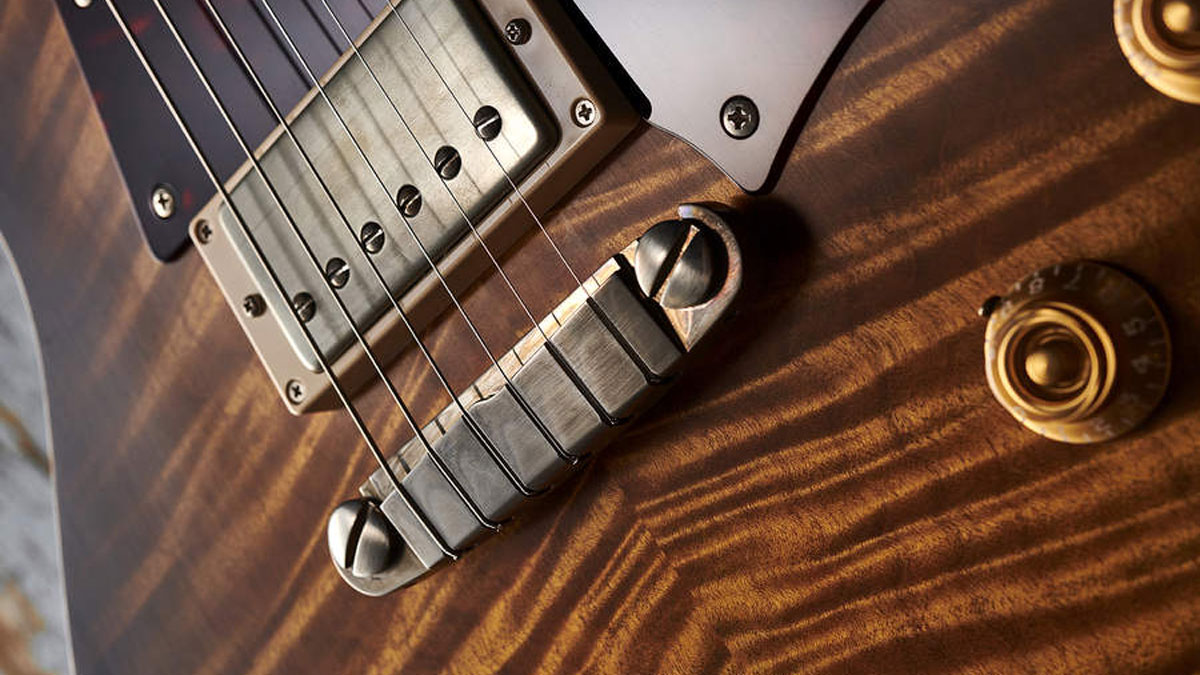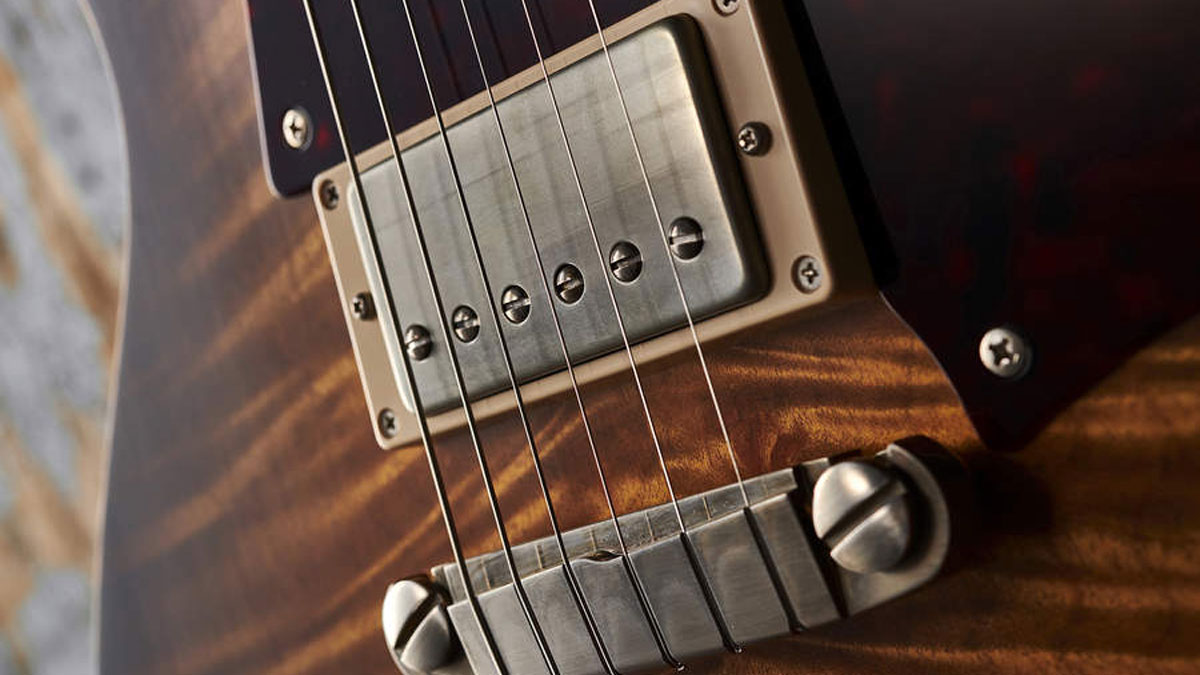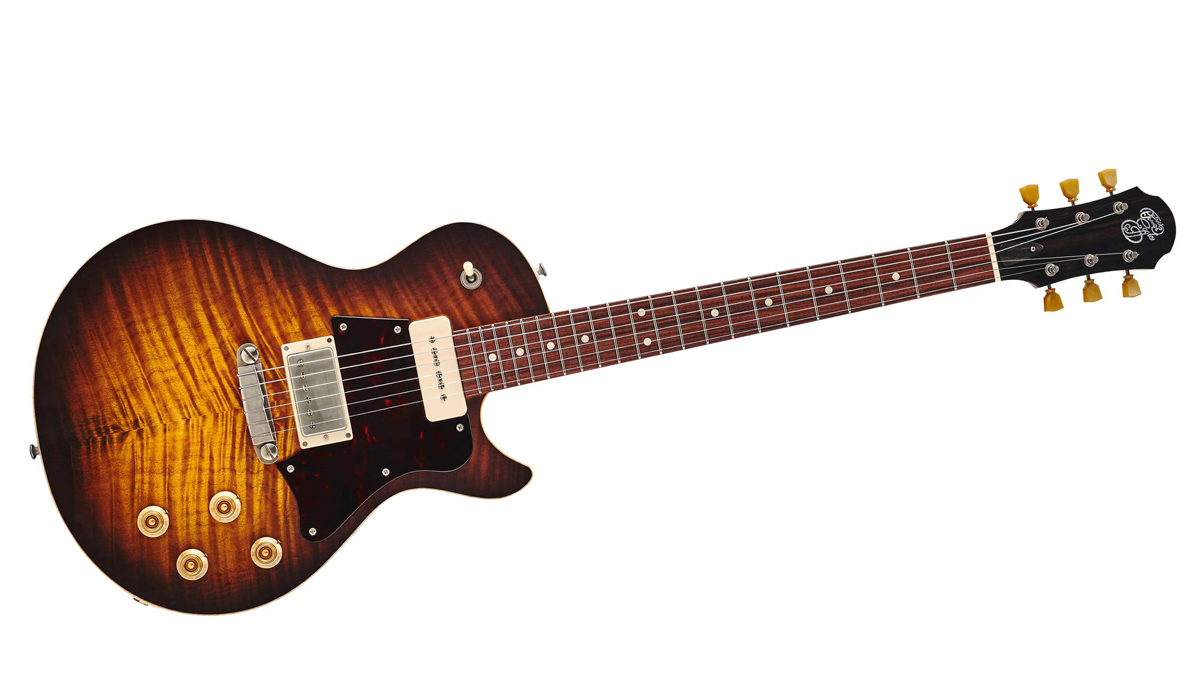MusicRadar Verdict
One of the best single-cuts we’ve ever played.
Pros
- +
Hugely detailed build.
- +
Light weight.
- +
Quality versatile voicing.
- +
One of the best necks money can buy.
Cons
- -
Yes, it’s a significant outlay - we suggest you start saving...
MusicRadar's got your back
Not so long ago, we looked at Patrick James Eggle’s single-cut Macon Junior.
Except, as we pointed out, in classic guitar terminology the (Les Paul) Junior has only one pickup: Patrick’s had two. In truth, that Junior has a more simplistic air with its slab mahogany body and open-pore finish and, let’s face it, Junior-and-a-half doesn’t quite do it on the name front. But don’t despair as the latest model to come off of the PJE workbench is this correctly named Macon Special - a souped-up version of the Junior.
It’s the latest in an increasingly long line of electrics since Patrick turned his back on the world of acoustics to build electric solidbodies. In what is undoubtedly a loss to the serious acoustic player, us electric players have been treated to some very fine instruments. The Special certainly bears a family resemblance; its dress adopts a gloss- free zone, the finish cut back to a satin sheen that’d no doubt buff up a little with playing. It’s not relic’d - there’s not a ding or bash to be seen - but the antique look extends to the hardware, done in-house, and can even be seen on the strap buttons. Only the gold control knobs look like later retrofits.
As with the Macon Junior, the Special’s slab body is mahogany, but here it’s topped with a centre-joined maple cap, around 6mm thick and creating an overall depth of 49mm. It’s a lovely weight, too, slightly lighter than the Junior we reviewed, and the mahogany back is actually chambered here in a honeycomb pattern, primarily to reduce weight, Patrick tell us.
That hand-burnished nitro finish is a very classic dark brown ’burst. The edges, PRS-style, have a lovely caramel hue that looks like edge binding. The back and sides are left relatively natural, though we suspect they’re slightly toned to enhance a classic old-mahogany look.

As with the Macon Junior, where you’d expect a mahogany neck we have a roasted (torrefied) maple neck that forms the heel, taking over from the contoured edge of the mahogany and slips, full-width, into the body under the neck pickup. It’s another beautifully elegant flourish removing the square tip of a traditional single-cut and adding to a lot more comfort in those top positions. The caramel colour of the neck ties in with the mid-brown of the Santos rosewood (also known as pau ferro) fingerboard and those simple dirty cream coloured dot inlays. As ever, the only bit of bling you get here is the inlaid headstock logo contrasted by the darker brown and striped ebony facing.
As we said, the hardware is very nicely aged, especially the Gotoh SD90 Kluson- style tuners, which look like they’ve been in place for a few decades, while the dulled nickel plating on the ABM bridge certainly fits the picture, too.
Patrick is a big fan of both the UK’s Mojo Pickups and a humbucker/P-90 configuration. Even the cream humbucker surround and the P-90 cover seem well considered. Like the Junior, we have a Gibson-style four-control layout. Beneath the perfectly fitted backplate are 500kohm Emerson Pro pots with a parallel capacitor (0.001 microfarads) and resistor (150kohm) treble-bleed on both volumes. Tone caps are both Russian: a .047 microfarad (K73-16B) on the neck; a .033 microfarad (K4 2Y2) on the bridge. The coil-split is a partial split, as used by PRS, with a 1kohm resistor between the tap wire and ground; the cavity is fully shielded, too. If this guitar sounds anything approaching its build quality and looks, we’re in for a treat.
Sounds
And that treat starts with the neck. The combination of the aptly named Fat-C shape (22.7mm deep at the 1st fret; 25mm at the 12th) and the worn-through burnished wood is impressive enough, but the fingerboard edges are noticeably - and very neatly - rounded, and as the appearance suggests, it feels like a neck that’s done countless gigs rather than one that’s been strung up for a matter of days. The fretwire gauge, relatively narrow and tall, is not only exceptionally installed and shaped but with minimal neck relief and a low action (1mm on the treble side, around 1.5mm on the bass) plays effortlessly, the 10s giving a little fight. That said, if you’re heavy handed, you might need a little more air, which suited us - with a more regular 1.6mm on treble and bass. The bone nut, too, is beautifully shaped. Not a detail is overlooked.
Patrick tells us that the humbucker here “is one that Marc Ransley at Mojo makes for me. It’s about 14kohms, with 42 AWG wire, so the idea is that it’s quite hot but not too compressed. The soapbar at neck is Mojo’s standard P-90, underwound by 15 per cent.”
The vastly different DCRs of the pickups (which we measured at the output to 13.54kohms at the bridge and 6.48k at the neck) illustrate just how unhelpful measurements like those can be. Here, for example, the outputs are well matched. The neck single coil has woody warmth with defined highs and a good percussive chop but retains beautiful clarity. The bridge, meanwhile, on cleaner tones, presents quite a honky nose but adds a little more hair or crunch, and that punch and relative power is very welcome. The mix is a surprise because it’s full but quite quacky, and while pulling the volumes down doesn’t lose the clarity, it does soften the attack in a good way.

The bridge split certainly gives another thinner texture, and although quieter in output than the P-90, pull the neck volume back a little, whack up the amp and you have a huge-sounding single-coil single-cut with a thick but nicely defined voice. Back on the split bridge, here’s a classic rock rhythm tone that would sit effortlessly in any rootsy rock setting. There’s still some of the characterful midrange voice of the full humbucker, which adds some punch, but it’s attenuated here.
That said, putting it in humbucking mode and pulling the volume down does a similar thing as the treble-bleed circuit keeps the high-end nice and clear. The four-control layout really stretches the sounds you can evoke and, overall, it’s a very responsive instrument if you choose to drive it that way. We certainly did.
But it’s the texture and bounce of the neck pickup and that mix, and the almost power- crunch of the bridge pickup, that gives this Special an interesting duality. Combine that with exceptional feel and playability and you have quite the workhorse. A single-cut with immense character.
The craft of this Special is impeccable and it’s all wrapped in a really classic old-school style with the sort of neck shape and feel you dream about. Aside from its beautiful light weight and vintage-y resonance, it’s less easy to determine what effect the chambered construction is having yet. Rather like a good vintage single-cut, there’s both a clear string-to- string definition, almost acoustic-like, that’s supported by classic single-cut depth and a hugely woody thickness, even at low volumes.
Even if you own a good Les Paul, or maybe a PRS 594 Singlecut, this Macon has more than enough character to sit in with the style of those but retain its own voice. Not only is this beautiful luthiery, it has a superb voice that apes those great 50s tones or, if you want it to, adds a hotter, perhaps more contemporary kick. This is without doubt up there with the best single-cuts (and there have been a few) we’ve ever played.
Dave Burrluck is one of the world’s most experienced guitar journalists, who started writing back in the '80s for International Musician and Recording World, co-founded The Guitar Magazine and has been the Gear Reviews Editor of Guitarist magazine for the past two decades. Along the way, Dave has been the sole author of The PRS Guitar Book and The Player's Guide to Guitar Maintenance as well as contributing to numerous other books on the electric guitar. Dave is an active gigging and recording musician and still finds time to make, repair and mod guitars, not least for Guitarist’s The Mod Squad.
“Built from the same sacred stash of NOS silicon transistors and germanium diodes, giving it the soul – and snarl – of the original”: An octave-fuzz cult classic returns as Jam Pedals resurrects the Octaurus
What’s the buzz? Meet Yellowjacket, Cherry Audio's recreation of EDP’s trend-setting Wasp from 1978
“A fabulous trip through all eight songs by 24 wonderful artists and remixers... way beyond anything I could have hoped for”: Robert Smith announces new Cure remix album











